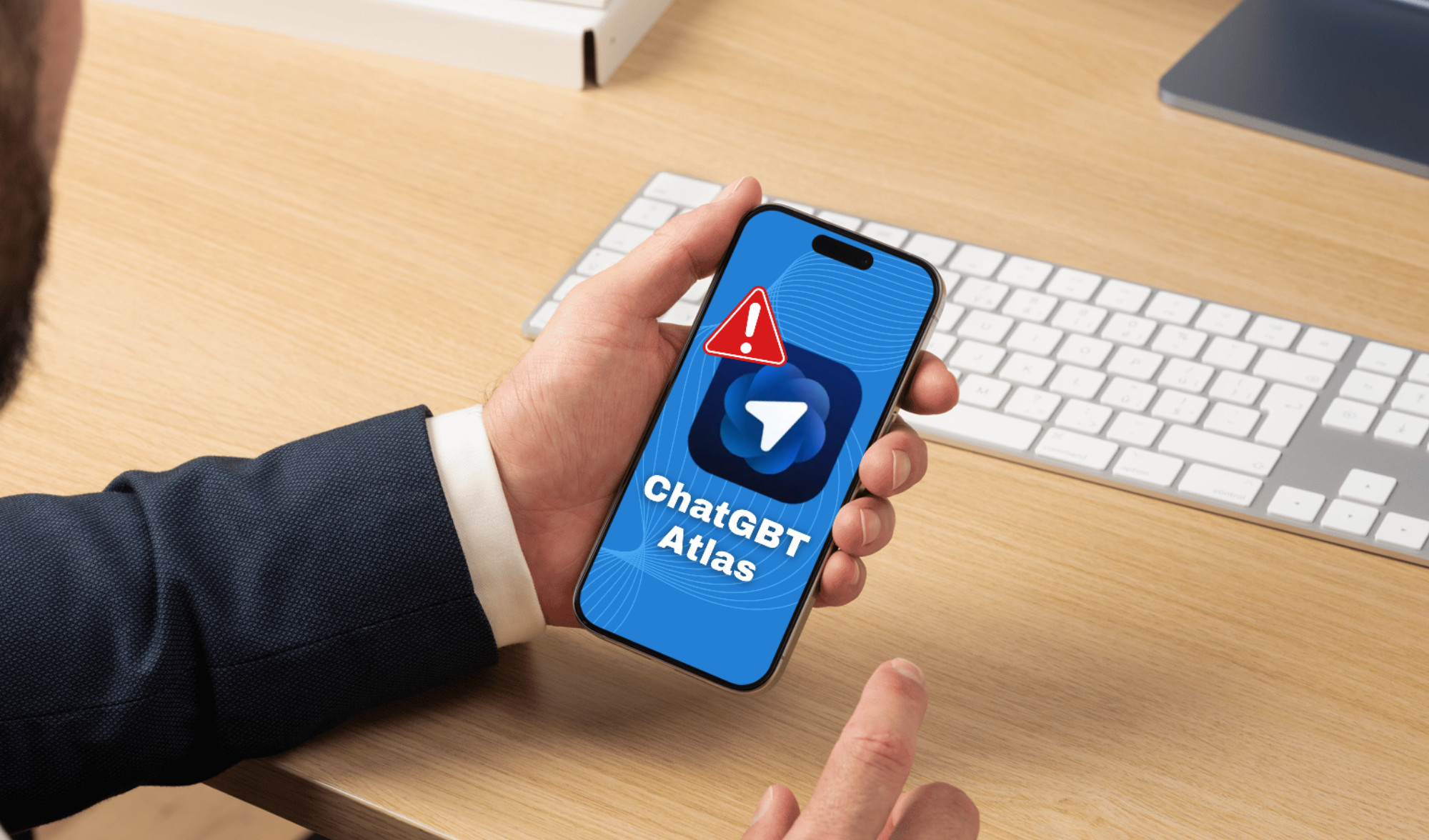Detailed reports showing security holes and warnings, informational items including CVSS scores as scanned from outside the target network. External vulnerabilities could allow a malicious attacker access to the internal network.
 Loading...
Loading...
Understanding External Network Vulnerability Scans: A Deeper Dive
In today’s interconnected digital landscape, your organization’s perimeter isn’t just a firewall; it’s a dynamic, ever-expanding attack surface visible to anyone with an internet connection. An External Network Vulnerability Scan acts as your digital sentry, proactively probing your internet-facing assets from an attacker’s perspective to uncover weaknesses before malicious actors do.
Unlike internal scans that assess vulnerabilities within your network, an external scan focuses exclusively on what the outside world can see and interact with. This includes:
- Public IP Addresses: The unique identifiers of your servers, routers, and other devices exposed to the internet.
- Web Servers & Applications: Your website, web portals, APIs, and any other web-facing services.
- Email Servers: Critical for business communication, but also a common target.
- VPN Endpoints & Remote Access Services: Gateways that allow employees to connect remotely.
- DNS Servers: Essential for directing internet traffic to your services.
- Other Network Services: Any ports or protocols unintentionally left open or misconfigured.
The scan emulates the reconnaissance phase of a cyberattack, systematically examining your external perimeter for known vulnerabilities. It identifies weak points, misconfigurations, and outdated software that could serve as easy entry points for ransomware, data breaches, or other cyberattacks. By providing a clear “outside-in” view of your security posture, an external scan is an indispensable first step in fortifying your defenses.
GiaSpace’s approach ensures that no stone is left unturned, giving you a complete picture of your external attack surface.
Key Benefits of Proactive External Vulnerability Scanning
Waiting for a breach to discover your weaknesses is a catastrophic strategy. Proactive External Network Vulnerability Scanning offers a multitude of benefits that are critical for modern businesses:
- Identify Weaknesses Before Attackers Do: This is the core value. External scans uncover open ports, outdated software versions, misconfigured firewalls, and other exploitable flaws that a cybercriminal could easily leverage. According to recent reports, over 70% of successful breaches exploit known vulnerabilities for which patches were available. By finding and fixing these vulnerabilities first, you drastically reduce your risk exposure.
- Prevent Costly Data Breaches: A single data breach can devastate a business. The average cost of a data breach in 2024 has soared to over $4.88 million globally, with smaller organizations (under 500 employees) seeing costs of around $3.31 million. External scans are your frontline defense, helping prevent unauthorized access to sensitive company and customer data, safeguarding your reputation, and avoiding significant financial and legal repercussions.
- Ensure Regulatory Compliance: Many industry regulations and standards—such as PCI DSS, HIPAA, GDPR, ISO 27001, and NIST frameworks—mandate regular vulnerability assessments. External scans provide documented proof of your efforts to identify and address security risks, helping you meet compliance requirements and avoid hefty fines. For instance, PCI DSS requires quarterly external vulnerability scans by an Approved Scan Vendor (ASV).
- Improve Firewall and Perimeter Security Effectiveness: Scans rigorously test your perimeter defenses, including firewalls, intrusion prevention systems (IPS), and web application firewalls (WAFs). They reveal if these critical controls are properly configured and effectively blocking malicious traffic or if there are any gaps that could be exploited.
- Gain an Unbiased, Attacker-Centric View: Unlike internal assessments, an external scan simulates the perspective of a hacker operating outside your network. This unbiased, black-box approach helps you understand what a determined adversary would see and how they might attempt to gain unauthorized access, providing invaluable insights that internal teams might overlook.
- Support a Proactive Security Strategy: Instead of reacting to incidents, external scans enable a proactive security posture. They empower you to address potential threats before they materialize, reducing the likelihood of successful attacks, minimizing downtime, and ensuring greater business continuity.
GiaSpace helps you transform your security from reactive firefighting to strategic foresight, securing your critical assets from the outside in.
How External Scans Differ from Internal Scans and Penetration Tests
While all three are crucial components of a comprehensive security program, External Network Vulnerability Scans, Internal Network Vulnerability Scans, and Penetration Tests serve distinct purposes and operate from different perspectives. Understanding these differences is key to building an effective defense strategy.
1. External Network Vulnerability Scan:
- Perspective: “Black box” or unauthenticated. It mimics an external attacker with no prior knowledge or access to your network.
- Scope: Focuses exclusively on your public-facing assets (IP addresses, web servers, email servers, VPNs, firewalls).
- Purpose: To identify known vulnerabilities, misconfigurations, and open ports on internet-facing systems that could be exploited from the outside. It’s about finding what weaknesses exist.
- Methodology: Automated tools scan for vulnerabilities by comparing system responses against a vast database of known CVEs (Common Vulnerabilities and Exposures).
- Frequency: Typically performed quarterly, or after any significant changes to your external infrastructure.
- Output: A report detailing identified vulnerabilities, their severity (e.g., CVSS score), and recommended remediation steps.
2. Internal Network Vulnerability Scan:
- Perspective: “White box” or authenticated. It simulates an attacker who has already gained internal access (e.g., through a compromised employee account, an infected workstation, or a physical breach).
- Scope: Focuses on devices and systems within your internal network (workstations, internal servers, databases, network devices, Active Directory).
- Purpose: To identify vulnerabilities, misconfigurations, and compliance issues that could allow an attacker to move laterally, escalate privileges, or access sensitive data after gaining initial internal access.
- Methodology: Automated tools scan internal systems, often using credentials to gain deeper insights into software versions, configurations, and patch levels.
- Frequency: Typically performed quarterly, or after significant internal network changes.
- Output: A report similar to an external scan, but focused on internal risks.
3. Penetration Test (Pen Test):
- Perspective: Can be “black box” (no info), “gray box” (limited info), or “white box” (full info), and can be external or internal. It’s a simulated, authorized attack.
- Scope: Highly targeted, often focusing on a specific system, application, or a set of objectives (e.g., “gain access to the customer database”).
- Purpose: To exploit identified vulnerabilities to prove whether they are truly exploitable, demonstrate the potential impact of a successful breach, and test the effectiveness of existing security controls (people, process, technology) in preventing and detecting an attack. It’s about demonstrating how a weakness can be leveraged.
- Methodology: Primarily manual, conducted by highly skilled ethical hackers who use a blend of automated tools and sophisticated manual techniques to bypass defenses and achieve defined objectives.
- Frequency: Typically performed annually, or after major system redesigns or significant compliance requirements.
- Output: A detailed report outlining discovered vulnerabilities, the exploitation path taken, impact analysis, and specific remediation recommendations, often including proof-of-concept.
In Summary: Vulnerability scans are like an X-ray, identifying potential problems. Penetration tests are like a surgeon, verifying if those problems are critical and demonstrating how deep the damage could go. External scans provide your crucial first line of defense from the internet, while internal scans and pen tests assess the depth of your internal resilience.
GiaSpace can help you determine the optimal combination of these assessments to achieve your security and compliance objectives.
The External Vulnerability Scanning Process: Step-by-Step
At GiaSpace, our External Network Vulnerability Scan is a systematic and thorough process designed to give you clear, actionable insights into your internet-facing security posture. We follow a meticulous methodology to ensure comprehensive coverage and accurate results:
- Scope Definition and Authorization:
- Initial Consultation: We begin by understanding your business, your critical assets, and your specific security concerns.
- Asset Identification: We work with you to identify all internet-facing assets that fall within the scope of the scan (e.g., specific IP address ranges, domain names, web applications). This ensures all relevant assets are included.
- Legal Authorization: A formal “Permission to Scan” is obtained. This crucial step protects both your organization and GiaSpace, ensuring the scan is authorized and legal.
- Information Gathering & Reconnaissance:
- Our expert team, using specialized tools, begins collecting publicly available information about your organization’s external infrastructure.
- This includes DNS enumeration, WHOIS lookups, identifying publicly listed IP addresses, email servers, and other services. This phase mirrors the initial steps an attacker would take to map out your digital footprint.
- Target Discovery & Port Scanning:
- We systematically probe the defined IP ranges to identify active hosts (servers, devices) and enumerate open ports.
- For each open port, we identify the running services (e.g., web server, mail server, remote desktop service) and their versions. This step is critical because each open port and running service represents a potential entry point for an attacker.
- Vulnerability Identification & Assessment:
- Using advanced, constantly updated vulnerability scanning tools, we compare the identified services, applications, and their versions against vast databases of known vulnerabilities (e.g., the National Vulnerability Database – NVD, vendor advisories, proprietary threat intelligence).
- The scan looks for:
- Missing security patches.
- Weak configurations (e.g., default credentials, unnecessary services).
- Known software flaws.
- Potential zero-day exposures (though these are less common for automated scans).
- Risk Analysis and Prioritization:
- Each identified vulnerability is analyzed and assigned a severity score, typically using the Common Vulnerability Scoring System (CVSS). This score considers factors like exploitability, impact, and complexity.
- GiaSpace prioritizes findings based on severity and the potential business impact on your specific environment. A “medium” vulnerability on a non-critical system might be less urgent than a “low” vulnerability on a critical financial server.
- Report Generation and Remediation Guidance:
- We generate a comprehensive, easy-to-understand report that details all identified vulnerabilities. This report includes:
- An executive summary for management.
- Detailed technical descriptions of each vulnerability.
- CVSS scores and risk levels (Critical, High, Medium, Low).
- Clear, actionable recommendations for remediation, including specific steps to fix each issue.
- Proof-of-concept (POC) where applicable, to demonstrate the vulnerability.
- Our team will then walk you through the report, explaining the findings and assisting you in developing a remediation plan.
- We generate a comprehensive, easy-to-understand report that details all identified vulnerabilities. This report includes:
- Re-scanning and Verification:
- After you’ve implemented the recommended fixes, we perform a re-scan to verify that the vulnerabilities have been successfully remediated. This crucial step ensures your efforts have effectively closed the security gaps.
GiaSpace’s structured scanning process ensures that you receive actionable intelligence, not just a list of alerts, empowering you to strengthen your external security posture effectively.
Common Vulnerabilities Discovered by External Scans
External network vulnerability scans are designed to expose the weak links in your internet-facing defenses. While the specific findings vary for each organization, some vulnerabilities appear repeatedly due to common misconfigurations, overlooked updates, or insecure practices.
Here are some of the most common critical and high-severity vulnerabilities frequently identified by external scans:
- Outdated Software and Missing Patches:
- Description: This is perhaps the most prevalent and dangerous vulnerability. Web servers (e.g., Apache, Nginx, IIS), operating systems (Windows Server, Linux distributions), content management systems (CMS like WordPress, Joomla, Drupal), network devices (routers, firewalls, VPNs), and other public-facing applications often have known security flaws. If these are not regularly updated with the latest security patches, they become easy targets.
- Impact: Attackers can exploit these unpatched flaws to gain unauthorized access, execute malicious code, or launch denial-of-service attacks. Many major breaches, including ransomware infections, begin with exploiting a known, unpatched vulnerability.
- Open Ports and Unnecessary Services:
- Description: Services running on your internet-facing servers expose “ports” to the internet. If ports that should be closed (e.g., administrative ports, database ports) are accidentally left open, they offer a direct pathway into your network. Similarly, if legitimate services are running but are not required (e.g., an outdated FTP server), they represent an unnecessary attack surface.
- Impact: Open ports can allow attackers to perform reconnaissance, exploit vulnerabilities in the exposed service, or even gain direct access if the service has weak authentication. Common culprits include open RDP (3389), SSH (22), SMB (445), or unsecure FTP (21).
- Weak or Default Credentials:
- Description: Many network devices, applications, and even some cloud services ship with default usernames and passwords. If these aren’t changed immediately, attackers can easily guess them using automated tools. Similarly, weak, common, or easily brute-forced passwords on any exposed service pose a significant risk.
- Impact: Direct unauthorized access to systems and data, allowing attackers to quickly establish a foothold and escalate privileges.
- Misconfigured Firewalls and Network Devices:
- Description: Firewalls are meant to be your first line of defense, but misconfigurations can render them useless. This includes overly permissive “allow” rules, incorrect network address translation (NAT), or unsegmented networks that allow an attacker to move freely if one external device is compromised.
- Impact: Allows unauthorized traffic to bypass security controls, exposes internal network segments to the internet, and makes it easier for attackers to pivot deeper into your network.
- Insecure Web Application Configurations (OWASP Top 10):
- Description: While not strictly network, many external scans include checks for common web application weaknesses. These include:
- Injection Flaws (SQL Injection, Command Injection): Allowing attackers to inject malicious code into data inputs.
- Broken Authentication: Weak session management or insecure login processes.
- Sensitive Data Exposure: Unencrypted sensitive data being transmitted or stored.
- Security Misconfiguration: Default configurations, unnecessary features, insecure permissions.
- Impact: Data breaches, website defacement, remote code execution, and complete control over web applications.
- Description: While not strictly network, many external scans include checks for common web application weaknesses. These include:
- Expired SSL/TLS Certificates or Weak Cryptography:
- Description: An expired or improperly configured SSL/TLS certificate can lead to browser warnings, eroding user trust. More critically, using weak or outdated cryptographic protocols (e.g., SSLv2/v3, TLS 1.0/1.1) makes your encrypted traffic vulnerable to interception and decryption.
- Impact: Compromised data confidentiality, man-in-the-middle attacks, and a significant hit to your website’s trustworthiness and SEO.
By regularly scanning your external perimeter, GiaSpace helps you continuously identify and mitigate these common attack vectors, safeguarding your organization from the most prevalent cyber threats.
Recommended Frequency for External Vulnerability Scans and Compliance
The frequency of your external network vulnerability scans is not a “set it and forget it” task. It should be determined by a combination of factors, including your risk appetite, the dynamic nature of your IT environment, and crucial regulatory compliance requirements.
General Recommendations:
- Minimum Quarterly Scans: For most organizations, a quarterly (every three months) external vulnerability scan is considered a baseline best practice. This provides a regular cadence to identify new vulnerabilities that emerge due to software updates, new configurations, or newly discovered CVEs.
- After Significant Changes: Beyond scheduled scans, it is imperative to conduct an immediate external scan after any significant changes to your internet-facing infrastructure. This includes:
- Deploying new applications or services.
- Making major network configuration changes (e.g., firewall rule changes, new VPN setup).
- Adding new public-facing servers or devices.
- Applying major system upgrades or patches.
- Following an suspected security incident.
- Continuous Monitoring for High-Risk Assets: For critical, high-risk assets (e.g., your primary e-commerce website, patient data portals, core business applications), consider more frequent scans – even monthly or weekly, or implementing continuous attack surface monitoring solutions. Given that over 130 new vulnerabilities (CVEs) are disclosed daily as of mid-2025, the threat landscape evolves rapidly.
Compliance Requirements:
Many industry regulations and standards explicitly mandate external vulnerability scanning at specific intervals. Adhering to these is non-negotiable for compliance:
- PCI DSS (Payment Card Industry Data Security Standard): This is one of the most stringent. PCI DSS Requirement 11.2.2 mandates quarterly external vulnerability scans to be performed by an Approved Scan Vendor (ASV). All “high risk” vulnerabilities identified must be remediated, and rescans are required until no high-risk vulnerabilities remain. Any significant changes to the cardholder data environment also necessitate a scan.
- HIPAA (Health Insurance Portability and Accountability Act): While HIPAA doesn’t specify an exact frequency, it mandates that Covered Entities and Business Associates conduct “periodic” technical and non-technical evaluations (risk assessments) to determine if security measures are effective. Regular external vulnerability scans are a critical component of demonstrating ongoing due diligence and risk management under HIPAA’s Security Rule.
- NIST SP 800-53 (National Institute of Standards and Technology Special Publication): This framework emphasizes the importance of continuous monitoring and “regular” vulnerability scans. While not setting a strict frequency, it aligns with monthly or quarterly scans for most systems, with more frequent checks for critical assets.
- ISO/IEC 27001 (Information Security Management Systems): ISO 27001 requires organizations to conduct information security risk assessments and implement controls to mitigate those risks. Regular vulnerability assessments, including external scans, are implied as a necessary control, with frequency determined by the organization’s risk assessment.
GiaSpace helps you navigate these complex requirements, tailoring a scanning schedule that aligns with your specific risk profile and ensures continuous compliance, reducing your exposure to potential fines and reputation damage.
Choosing the Right External Vulnerability Scanning Tools and Providers
Selecting the right external vulnerability scanning solution is a critical decision for your organization’s security. While various tools exist, the choice often comes down to balancing in-house capabilities with the unparalleled expertise and comprehensive service offered by a dedicated cybersecurity provider like GiaSpace.
Understanding the Options:
- Open-Source Tools:
- Examples: Nmap (for port scanning), OpenVAS (Open Vulnerability Assessment System).
- Pros: Free, highly customizable, good for initial exploration or small-scale needs if you have in-house expertise.
- Cons: Require significant technical knowledge to set up, configure, interpret results, and manage false positives/negatives. Lack professional support, detailed reporting, and integration with broader security ecosystems. Often miss advanced vulnerabilities.
- Commercial Off-the-Shelf (COTS) Scanners:
- Examples: Tenable Nessus, Qualys, Rapid7 InsightVM, Acunetix, Invicti.
- Pros: User-friendly interfaces, extensive vulnerability databases, regular updates, some level of support, automated reporting.
- Cons: Can be expensive, still require in-house security analysts to interpret complex reports, prioritize findings, and most importantly, perform actual remediation. They are tools, not a complete solution. May generate false positives.
- Managed Vulnerability Scanning Services (like GiaSpace):
- Pros:
- Expert Analysis: Beyond just running a tool, GiaSpace provides human expertise to interpret scan results, filter out false positives, and contextualize findings for your specific business.
- Actionable Remediation Guidance: We don’t just give you a list of vulnerabilities; we provide clear, prioritized, step-by-step instructions on how to fix them, and can even assist in the remediation process.
- Continuous Threat Intelligence: Our teams are constantly abreast of the latest exploits, zero-days, and attack vectors, ensuring our scans are always looking for the newest threats.
- Compliance Assurance: We understand regulatory requirements (PCI DSS, HIPAA, etc.) and ensure your scans meet the necessary standards, providing audit-ready reports.
- Reduced Burden on Internal IT: Free up your valuable internal IT resources to focus on core business operations, rather than the complex, time-consuming task of vulnerability management.
- Holistic Security Perspective: As a full-service cybersecurity provider, GiaSpace can integrate scan findings into a broader security strategy, including incident response, penetration testing, and ongoing monitoring.
- Cons: May be perceived as a higher upfront cost than just buying a tool, but the long-term value, reduced risk, and peace of mind often far outweigh this.
- Pros:
What to Look for in a Provider:
- Certifications & Experience: Look for providers with industry certifications (e.g., OSCP, CEH for their staff) and a proven track record.
- Methodology & Reporting: Ensure their process is transparent and their reports are clear, comprehensive, and actionable.
- Support & Communication: A good partner offers ongoing support and clear communication channels.
- Scalability: Can they grow with your business?
- Compliance Expertise: Are they knowledgeable about the regulations relevant to your industry?
Choosing GiaSpace means choosing a partner committed to transforming raw scan data into actionable security intelligence, securing your external presence, and giving you confidence in your digital perimeter.
Understanding Your Scan Report: Prioritizing and Remediating Findings
Receiving an external vulnerability scan report can sometimes feel overwhelming, particularly if it’s a lengthy document filled with technical jargon. However, understanding and effectively acting on this report is the most crucial step in enhancing your security posture. At GiaSpace, we ensure our reports are not just lists of vulnerabilities, but actionable roadmaps to better security.
Key Sections of a Comprehensive Scan Report:
- Executive Summary: A high-level overview for management, detailing the scan’s scope, methodology, key findings (e.g., number of critical/high vulnerabilities), and an overall risk assessment. This provides immediate context without diving into technical specifics.
- Overall Risk Posture: Often a visual representation (e.g., a dashboard or score) showing your current security health based on the scan’s findings.
- Detailed Vulnerability Listings: For each identified vulnerability, you’ll find:
- Vulnerability Name/ID (e.g., CVE ID): A unique identifier for the specific flaw.
- Description: A clear explanation of what the vulnerability is and how it could be exploited.
- Severity Rating (CVSS Score): A standardized score (0.0-10.0) indicating the severity of the vulnerability, typically categorized as Critical, High, Medium, or Low.
- Affected Assets: The specific IP addresses, hostnames, or services where the vulnerability was found.
- Proof of Concept (PoC) (if applicable): Sometimes includes a screenshot or description demonstrating how the vulnerability was detected.
- Remediation Recommendations: This is the most vital part. For each vulnerability, the report provides clear, step-by-step instructions on how to fix the issue. This might include:
- Applying specific software patches or updates.
- Changing default configurations.
- Implementing stricter access controls.
- Closing unnecessary ports.
- Updating or replacing vulnerable components.
Prioritizing Remediation: The Critical Approach
Not all vulnerabilities are created equal. Effective remediation requires prioritization:
- Critical and High-Severity Findings (Immediate Action): These are the most dangerous. They often have easily exploitable attack paths and could lead to direct system compromise, data breaches, or complete network disruption. Focus on these first.
- Medium-Severity Findings (Planned Action): These could contribute to a breach if chained with other vulnerabilities or require more complex exploitation. Address these after critical/high issues are resolved.
- Low-Severity Findings (Long-Term Action/Acceptance): These typically have minimal direct impact or are very difficult to exploit. While ideal to fix, they may be deferred or accepted if the risk is deemed acceptable after thorough analysis.
Remediation Best Practices:
- Develop a Remediation Plan: Assign ownership, set deadlines, and track progress for each vulnerability.
- Test Patches in a Staging Environment: Before deploying patches to production, test them to prevent system instability or outages.
- Automate Where Possible: Use patch management systems to streamline updates.
- Verify Fixes with Re-scans: Always re-scan after remediation to confirm the vulnerability has been successfully closed. GiaSpace provides re-scans to ensure fixes are effective.
- Document Everything: Maintain a record of all vulnerabilities, remediation actions, and re-scan results for audit purposes and continuous improvement.
GiaSpace doesn’t just deliver a report; we partner with you to interpret the findings, prioritize the most critical risks, and guide you through the remediation process, ensuring your external defenses are robust and effective.
Beyond the Scan: Integrating Vulnerability Management into Your Security Program
An external network vulnerability scan is a powerful snapshot of your security posture, but it’s just one component of a holistic and continuous vulnerability management program. True resilience against cyber threats requires an ongoing, cyclical approach to identifying, assessing, mitigating, and monitoring vulnerabilities across your entire IT ecosystem.
Think of it as a continuous cycle:
- Asset Inventory and Discovery: You can’t protect what you don’t know you have. A comprehensive vulnerability management program begins with continuously discovering and inventorying all your digital assets, both internal and external. This includes servers, workstations, network devices, cloud instances, applications, and even shadow IT.
- Vulnerability Scanning (External and Internal): This is where your external scans (and complementary internal scans) fit in. They systematically identify security weaknesses within your infrastructure and applications, relying on updated vulnerability databases.
- Vulnerability Assessment and Prioritization: Raw scan results need expert analysis. This step involves:
- Contextualization: Understanding the specific impact of a vulnerability on your business operations. A “high” vulnerability on a non-critical development server might be less urgent than a “medium” one on your customer-facing portal.
- Threat Intelligence Integration: Overlaying scan findings with current threat intelligence (e.g., “Is this vulnerability actively being exploited in the wild?”).
- Risk Scoring: Using systems like CVSS combined with asset criticality to assign a clear priority for remediation.
- Remediation and Mitigation: This is the action phase. Based on prioritization, your team (or your cybersecurity partner) implements fixes, which can include:
- Applying patches and updates.
- Changing configurations.
- Implementing compensating controls (e.g., WAFs, IDS/IPS rules) if immediate patching isn’t possible.
- Retiring vulnerable systems.
- Verification and Re-scanning: After remediation, it’s crucial to re-scan to confirm that the vulnerability has been successfully addressed and no new issues were introduced.
- Reporting and Monitoring:
- Continuous Monitoring: Implementing Security Information and Event Management (SIEM) or Extended Detection and Response (XDR) solutions to monitor for suspicious activity and potential exploits in real-time.
- Performance Metrics: Tracking key performance indicators (KPIs) like Mean Time To Remediate (MTTR), number of critical vulnerabilities open, and compliance status.
- Regular Reporting: Providing clear, actionable reports to both technical teams and executive leadership.
Why this integrated approach matters:
- Dynamic Threat Landscape: With over 130 new CVEs disclosed daily and evolving attack techniques, a one-off scan is insufficient.
- Compliance Demands: Regulatory bodies increasingly require continuous vulnerability management, not just point-in-time assessments.
- Reduce Attack Surface: A continuous program systematically shrinks the window of opportunity for attackers.
- Strategic Resource Allocation: Prioritizing vulnerabilities ensures your teams focus on the highest risks first.
GiaSpace can help you build and manage a robust, continuous vulnerability management program, integrating external scans with a broader strategy that ensures your organization remains secure and resilient against cyber threats.
Why Partner with GiaSpace for Your External Network Security
When it comes to safeguarding your organization’s digital perimeter, you need more than just automated tools – you need a trusted partner with deep expertise, a proactive approach, and an unwavering commitment to your security. GiaSpace is that partner.
Here’s why choosing GiaSpace for your External Network Vulnerability Scans and broader cybersecurity needs is a strategic decision:
- Expert-Driven Analysis, Not Just Raw Data: Our strength lies beyond simply running industry-leading scanning tools. Our certified cybersecurity experts meticulously analyze every scan result, eliminating false positives and providing actionable intelligence tailored to your unique business context. We don’t just deliver a report; we deliver clarity and a clear path forward.
- Comprehensive, Actionable Remediation Guidance: We understand that identifying vulnerabilities is only half the battle. Our reports come with clear, prioritized, step-by-step recommendations for remediation. We can even assist your internal IT teams in implementing these fixes, ensuring that vulnerabilities are not just identified, but effectively closed.
- Proactive Threat Intelligence and Methodology: The cyber threat landscape is constantly evolving. Our team stays ahead of the curve, integrating the latest global threat intelligence and adopting cutting-edge methodologies. This ensures our scans are always looking for the newest attack vectors and zero-day vulnerabilities, providing you with a defense that anticipates threats.
- Unwavering Compliance Assurance: Navigating complex regulatory frameworks like PCI DSS, HIPAA, GDPR, and ISO 27001 can be daunting. GiaSpace has extensive experience ensuring our vulnerability assessments meet and exceed these compliance requirements, providing you with audit-ready documentation and peace of mind.
- Reduced Burden, Enhanced Focus: Free up your valuable internal IT resources. By partnering with GiaSpace, you can offload the complexities of regular scanning, analysis, and initial remediation planning. This allows your team to focus on core business operations, innovation, and strategic IT initiatives.
- Holistic Security Partnership: An external scan is a critical component, but true security is holistic. GiaSpace offers a full spectrum of cybersecurity services, from internal vulnerability scans and penetration testing to incident response, managed detection and response (MDR), and security awareness training. We can integrate your external scan findings into a comprehensive security program that protects your entire organization.
- Commitment to Your Resilience: At GiaSpace, your security is our mission. We pride ourselves on building long-term partnerships, providing continuous support, and adapting our services as your business and the threat landscape evolve. We are your dedicated allies in the fight against cyber threats.
Don’t leave your external security to chance. Partner with GiaSpace and gain the confidence that comes from having a robust, expertly managed external network security posture. Contact us today for a consultation.
Published: Jun 28, 2025







